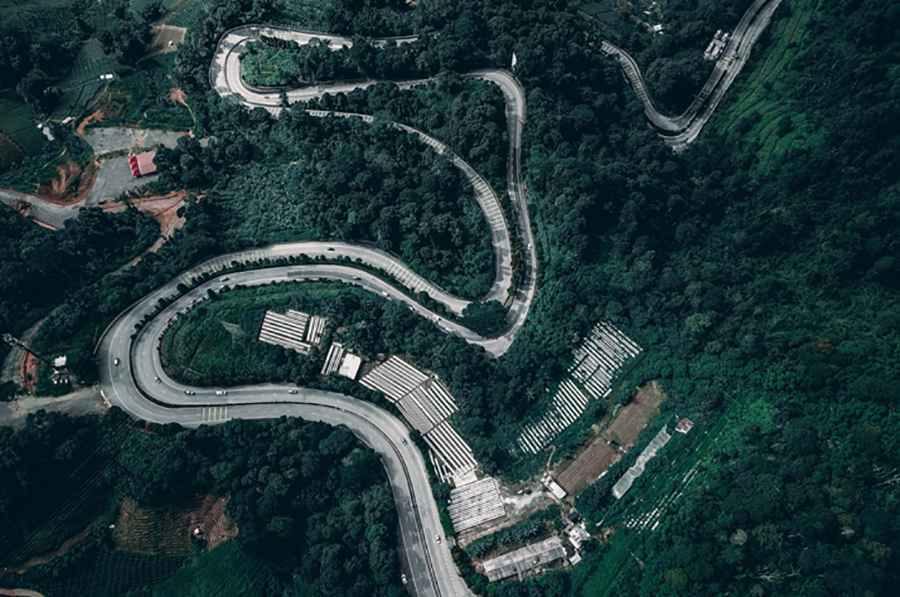Why Auto Shipping Carriers Avoid Dangerous Roads
Car carriers, also known as auto transporters, are specialized vehicles designed to transport multiple cars at once, making them integral to the automobile industry's distribution and supply chain. Although sometimes it can’t be totally avoided, car carriers will always try to stay clear of most dangerous roads.

Car Carriers Are Huge
Due to their unique dimensions and the delicate nature of their cargo, car carriers are often subject to certain restrictions and limitations, particularly when it comes to traversing narrow and difficult areas. Although car shipping companies will successfully provide door to door car transport every day, there will be times exceptions exist because of limitations where there’s nobody to blame but the roads themselves.
In those cases, the pick up or delivery contacts will need to meet the trucker in a safe location. This is generally pretty easy and normal considering the alternative of risking damage.
Limitations
These limitations stem from a variety of factors, including road condition, road design, regulatory restrictions, environmental conditions, and just plain old common sense.
Firstly, the sheer size and weight of car carriers put them at a significant disadvantage when navigating narrow, winding, or steep roads. Car carriers typically measure up to 75 feet long and can weigh up to 80,000 pounds when fully loaded.
These specifications far exceed those of the average vehicle, which makes maneuvering such roads a challenging task even for the most seasoned drivers. There is a high risk of getting stuck, causing property damage, or worse, toppling over on such roads, jeopardizing both the driver and the valuable cargo.

Secondly, roads in poor condition present a significant hazard for car carriers. Potholes, loose gravel, or uneven surfaces can cause instability, leading to damage to the vehicle or the cars being transported.
The risk is even more significant for carriers loaded with luxury or classic cars, where even minor damage can translate into significant financial losses. Therefore, many car carriers avoid roads that are in poor condition to mitigate these risks. Wouldn’t you? And don’t you want them to?
Road Design Woes
Road design also plays a critical role. Roads with low-hanging trees or bridges, or those with sharp turns and limited visibility, can be challenging for car carriers to navigate. Low clearance bridges and overpasses can limit the height of the cars they can transport, and tight turns can be difficult for these lengthy vehicles to maneuver.
Big Brother is Watching
Furthermore, regulatory restrictions often prohibit car carriers from traveling on certain roads. For instance, many residential areas have laws against heavy-duty vehicles to mitigate noise and protect road surfaces.
Additionally, some regions have laws restricting the maximum allowable vehicle height, length, or weight on certain roads, which can prohibit car carriers.

Bad Weather
Last but not least, extreme weather conditions can make certain roads too dangerous for car carriers. When possible, steps will be taken to drive safely in severe weather. But there are just times that it’s not possible to do so no matter how many precautions are taken.
For example, roads that are prone to flooding, icing, or landslides may be off-limits to these large vehicles due to the associated risks. The safety of the driver, the vehicle, and the cargo is always a top priority, and as such, certain weather conditions can effectively render some roads impassable for car carriers.
In conclusion, while car carriers play a crucial role in the automobile industry, their size, weight, and the nature of their cargo present unique challenges. These challenges, combined with road conditions, road design, regulatory restrictions, and weather conditions, limit the roads that these vehicles can safely and legally traverse.
As such, careful route planning is crucial for car carriers to ensure the safety and efficiency of their operations, even if this means avoiding certain roads that are deemed too dangerous. The industry continuously seeks innovative solutions to these challenges, from improved vehicle designs to advanced navigation and weather forecasting systems, to ensure that cars can be delivered safely and efficiently to their destinations.